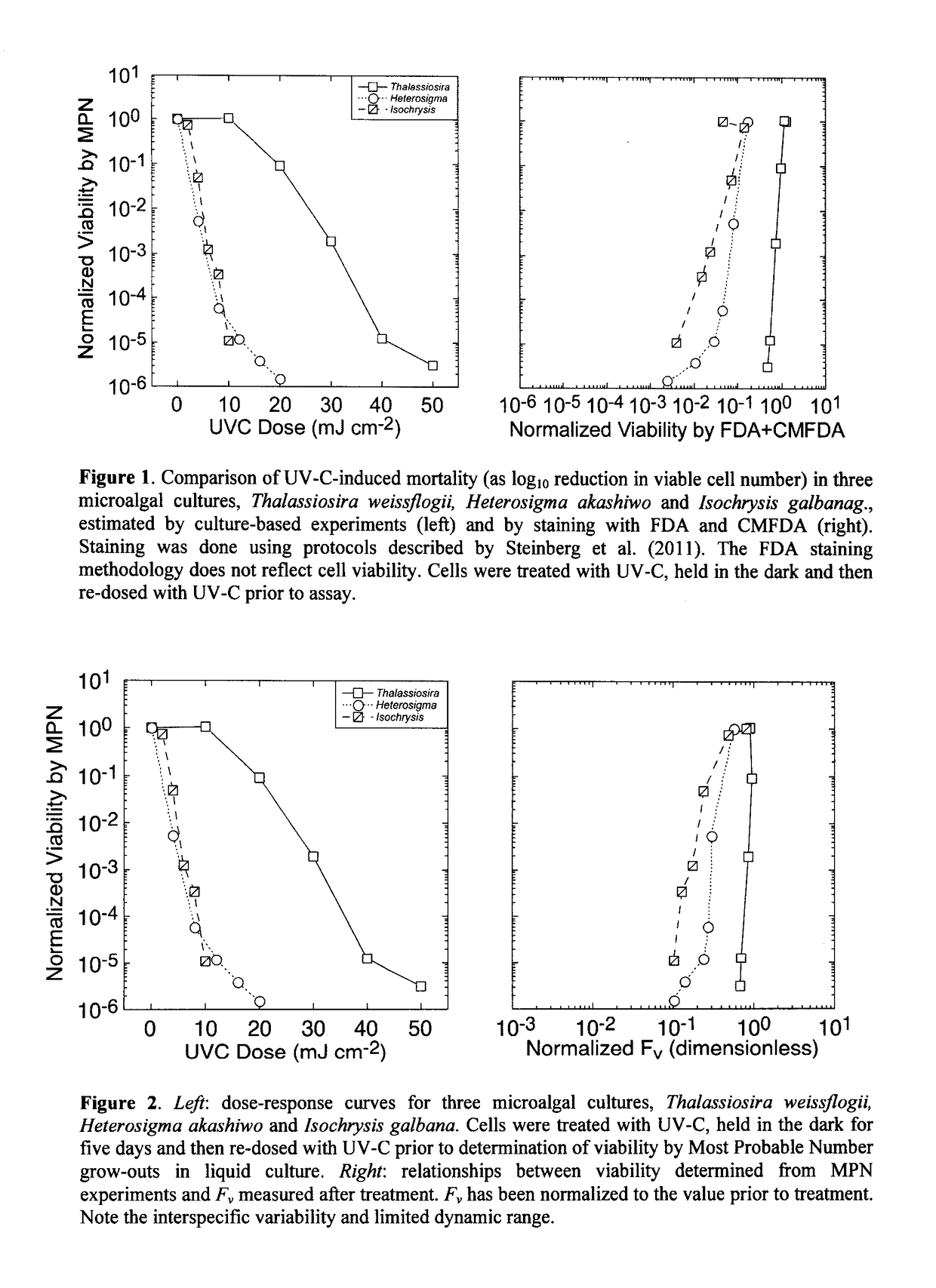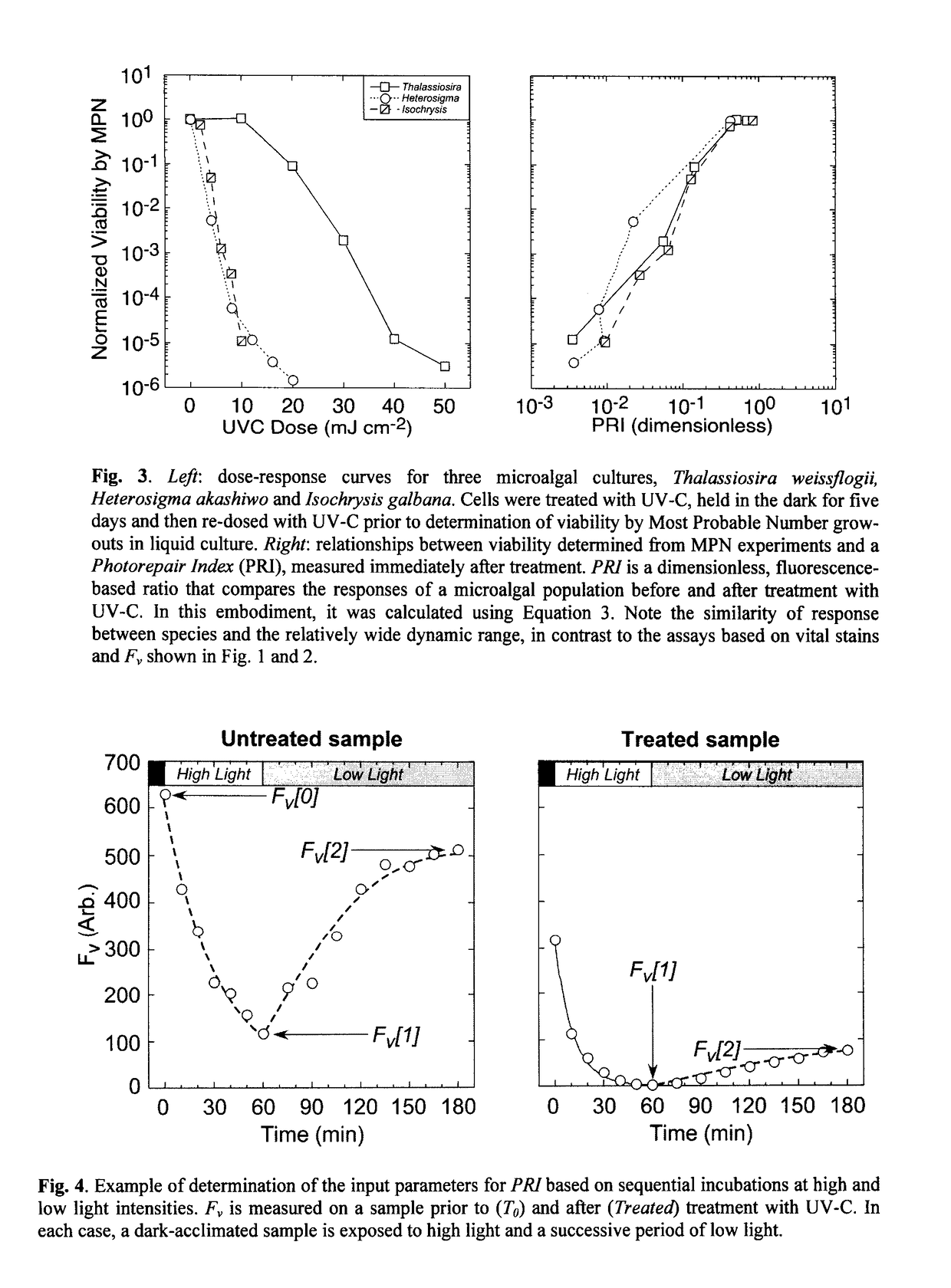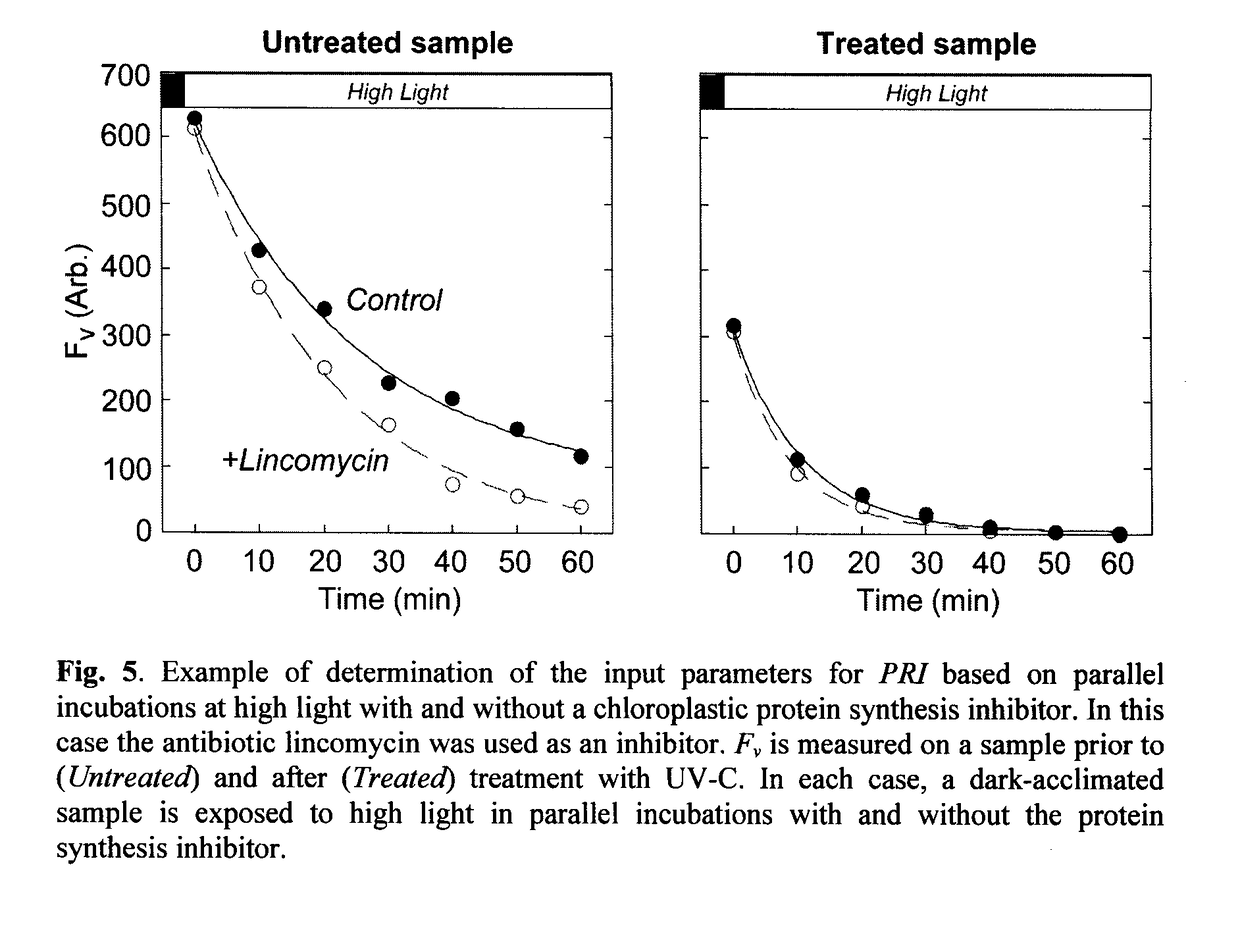Method for Assaying for Loss of an Organism in an Aqueous Liquid
- Summary
- Abstract
- Description
- Claims
- Application Information
AI Technical Summary
Benefits of technology
Problems solved by technology
Method used
Image
Examples
example 1
[0137]Cultures of marine microalgae were used in the Examples. These were obtained from the Provasoli-Guillard National Center for Marine Algae (East Boothbay, Me., USA) and maintained at low optical density at 18° C. on a 12:12 L:D cycle.
[0138]Illumination was provided by cool-white fluorescent bulbs at an intensity of 80 μmol photons m−2s−1 PAR.
[0139]Cultures were maintained in nutrient-replete balanced growth at constant density by daily dilution with fresh medium (Maclntyre and Cullen 2005). Cultures were monitored daily for dark-acclimated chlorophyll a fluorescence (Brand et al., 1981) using a 10-AU fluorometer (Turner Designs, San Jose, Calif., USA) and a FIRe fluorometer (Satlantic, Halifax, NS, Canada). Both fluorometers were blanked daily and fluorescence was normalized to a 200 μM rhodamine standard.
[0140]Daily specific growth rates (μ, (d−1) were calculated from the dilution-corrected change in fluorescence over the preceding 24 h assuming exponential growth (Maclntyre a...
example 2
[0148]In this example, the photorepair index was calculated from the differential loss of Fv during application of a photoinhibitory light regime with and without the antibiotic lincomycin, an inhibitor of chloroplastic protein synthesis—see FIG. 5.
[0149]An exponentially-growing culture was divided into two aliquots. One, the Untreated sample, was assayed immediately; the second Treated sample was irradiated with UV-C before assay.
[0150]Both the Untreated and the Treated samples were then subdivided into control and antibiotic-treated subsamples. The control samples were assayed without further amendment. The antibiotic-treated samples were treated with an aqueous solution of lincomycin to a final concentration of 500 μg ml−1 and incubated at growth temperature in the dark for 10 minutes to allow uptake of the antibiotic.
[0151]Subsequently, all four samples were subjected to identical assay conditions. Each was first dark-acclimated for a minimum of 20 min to allow short-lived fluor...
example 3
[0153]Viability of the cultures subsequent to treatment with UV-C was assessed by the Most Probable Number (MPN) assay (Cochran 1950; Blodgett 2005a,b).
[0154]Thus, the cultures were diluted in 3 log-interval series (e.g. 10−1, 10−2 and 10−3) with fresh growth medium. The appropriate dilution range for any UV-C dose was determined in preliminary, range-finding experiments.
[0155]For each culture, five replicates of each dilution were then incubated at an irradiance and temperature optimal for growth (typically 160 μmol photons m−2s−1 of PAR and 22° C.) and monitored for growth every 48 h using the 10-AU fluorometer. Tubes were scored positive for growth if fluorescence increased by an order of magnitude above the limit of quantitation (Anderson 1989) or the initial fluorescence reading, whichever was higher.
[0156]The Most Probable Number of viable cells was then obtained from look-up tables (Blodgett 2010) and converted to a concentration from the volume of culture in each tube and th...
PUM
 Login to View More
Login to View More Abstract
Description
Claims
Application Information
 Login to View More
Login to View More - R&D
- Intellectual Property
- Life Sciences
- Materials
- Tech Scout
- Unparalleled Data Quality
- Higher Quality Content
- 60% Fewer Hallucinations
Browse by: Latest US Patents, China's latest patents, Technical Efficacy Thesaurus, Application Domain, Technology Topic, Popular Technical Reports.
© 2025 PatSnap. All rights reserved.Legal|Privacy policy|Modern Slavery Act Transparency Statement|Sitemap|About US| Contact US: help@patsnap.com



